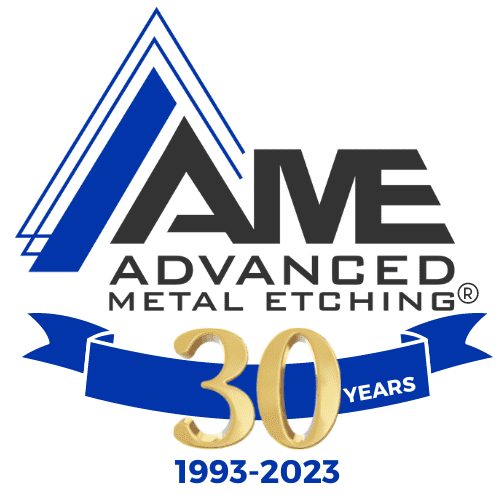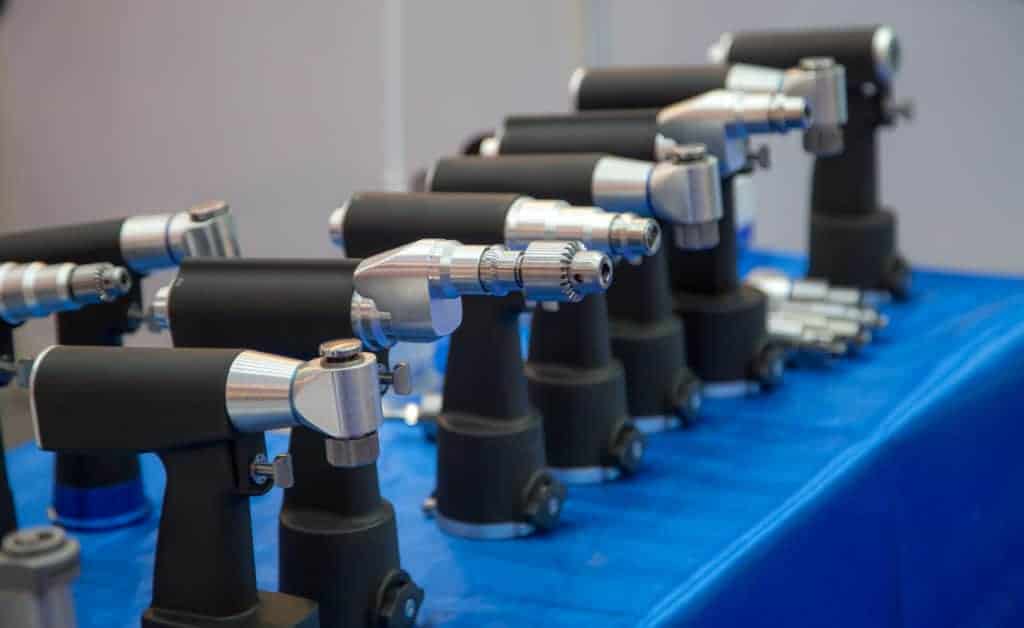Medical Device Prototype
Photo etching solutions for bone cutting device prototypes
The medical device industry is growing and innovating faster due to the recent pandemic, aging baby boomers, and new technologies to hit the market. Medical device manufacturers are using a variety of manufacturing methods to get their products to market quickly. Therefore, we are experiencing an increase in photo etching quotes for new prototypes.
One most recent request for a quote was from a development engineer at a medical device manufacturing company that makes orthopedic equipment. The engineering team designed several bone-cutting device prototypes with unique features and precision edges.
The Problem
They tried laser-cutting the components, but it proved to be inefficient and, therefore, too expensive. So, they turned to us to see if photo etching would save time and improve accuracy since they are single-use parts that require a lower price point for marketability. Ultimately, they are thinking long term and intend to scale the parts in larger quantities as the demand increases.
As is often the case with laser cutting, larger volumes are inefficient since each part is manufactured individually. With the photo etching process, all the pieces are etched simultaneously on one piece of sheet metal. The engineers were smart to seek chemical etching because this will shorten lead times and lower the cost per part.
The Challenge
Usually, intricate designs are not an issue with etching because the cost is the same no matter how complex or how many holes or slots. These prototypes were different because each side of the part required different surface edge dimensions.
To give a quick photo etching background, the edges of a photo-etched part has a slight bevel, about 50% of the material thickness, that is not visible to the naked eye in thinner metals. This "etch factor', an industry term, naturally occurs when the acid washes from the center to the edge, but it does not affect the precision of the edge outline. So, the challenge was, how can we alter the process to give a more generous bevel to one side of the prototype?
Instead of passing on this opportunity, we welcomed the challenge to think outside of the box. Manufacturing is never a black and white process, and with the ingenuity of our team, we came up with a solution.
The Solution
The first step was to adjust the tooling design. Since photo etching tooling is digital, our engineer used CAD to make changes in the tooling design that would allow for greater edge dimensions on the tooling film for one side of the part.
After the first run proved unsuccessful, the engineer reworked the tooling for a second time, and the machinist made changes in the etching pressure. The second run results were a success! The dimensions and tolerances were exact to the part print. The company also required their logo etched onto one side of the part. Another great feature of photo chemical etching is half-etching; designs, logos, or numbers can easily be included in the tooling design and etched simultaneously. There is no extra time involved and, therefore, no additional cost!
The Results
The development engineer and his team were pleased with the results and gave us additional prototypes of bone-cutting devices with slightly different features than the original prototype. We have since completed all of them with success. The medical device company is ready to scale these components when they market their new product. Photo etching proves to be a good metal fabrication process for their long-term plan regarding capabilities and cost.
"The sample piece that Advanced Metal Etching provided delivered results that were even better than expected. We are excited to continue to work with AME to push their methods further and create a solution to a unique problem and turn our prototypes into a highly functioning product." Development Engineer
Photo Etching Advantages for the Medical Device Industry
This case study highlights how photo etching can be the right process for complex designs and long term cost savings. Below are the four factors to consider when using chemical etching in the medical device industry in terms of cost and quality.
- Prototyping
- Complex Designs
- Metal Choice
Prototypes
Compared to traditional manufacturing methods that use hard toolings, such as CNC machining and stamping, prototype manufacturing with chemical etching is less expensive and more flexible. Tooling costs are a couple of hundred dollars compared to dies that can cost into the thousands. For testing purposes, this makes etching a more economical choice. Since the tooling is digital, part revisions are quick, and half the original part tooling cost.
The bone-cutting device prototypes were all made of the same material, 304 stainless steel, and the same metal thickness. For this reason, we were able to fit all the different tooling designs on the same sheet of metal to save material and labor costs. This industry term is known as compound or composite tooling, and it lowers the cost of the project. Below is a drawing of an example of how different parts with the same material and thickness, and temper can be etched simultaneously on the standard sheet size.
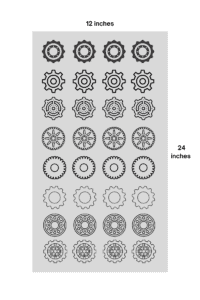
Complex Designs
Photo etching is the most economical manufacturing process for the production of parts with intricate features, apertures, and designs. In this case study, the bone-cutting device had unusual features that were difficult to manufacture on a larger scale using other processes. The medical device industry has some of the highest standards for patient safety. Therefore, all components and devices must have the utmost precision while maintaining low tolerances. Some applications of complex parts in the medical industry would include screens for filtration, stents, lead-frames, and anode and cathode grids for batteries, to name a few. Laser-cutting in larger quantities would cost more, and stamping would cause stress deformation compromising precision in these most delicate parts.
Metal Choice
Like the kind used in the bone-cutting prototypes, stainless steel is popular in medical devices because it is easy to sterilize, corrosion-resistant, and strong. Moreover, it is an easy metal to etch and is less expensive than other metals used in medical devices such as titanium and nitinol. A surgical blade is one example of a stainless steel instrument that is easy to etch with the photo etching process.
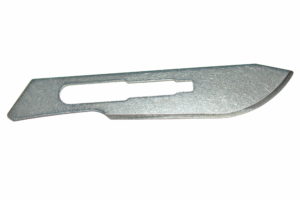
For prototypes with complex designs, photo etching proves to be the most economical manufacturing choice when you are ready to increase volumes. Parts are guaranteed burr and stress-free to meet the medical industry's highest standards.
